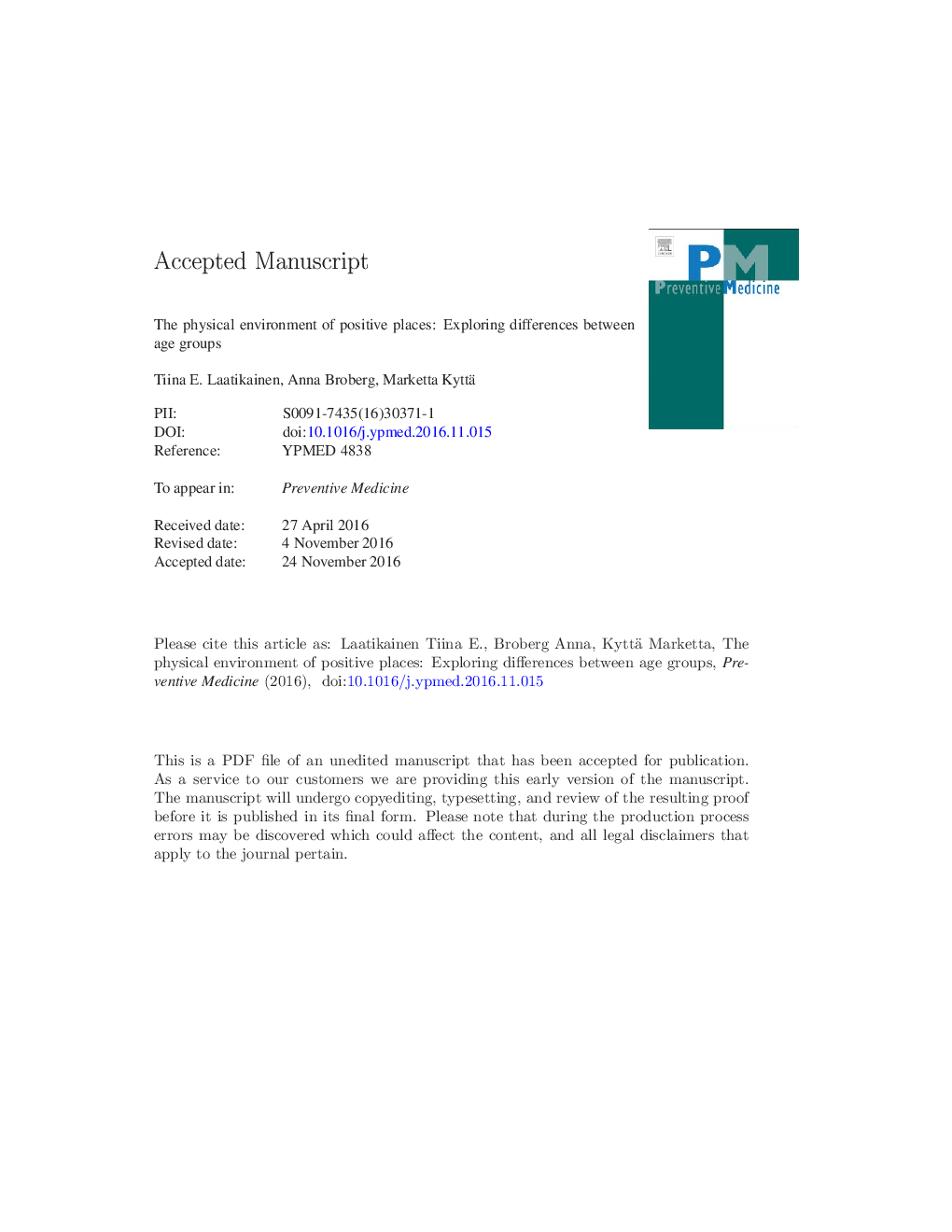| Article ID | Journal | Published Year | Pages | File Type |
|---|---|---|---|---|
| 5635835 | Preventive Medicine | 2017 | 26 Pages |
Abstract
Thus, the usage and perceptions of different spaces can also differ between various age groups. Public Participation GIS datasets collected in 2009 and 2011 in Helsinki Metropolitan Area were used to study places perceived as being positive by adults (n = 3119) and children (n = 672). Participants marked points on a map that were overlaid with GIS data to study whether the physical environment of positive places of different age groups differed. The results demonstrated that the physical environment differs significantly in the positive places of different age groups. The places of adult age groups were characterized by green, blue and commercial spaces, whereas sports, residential and commercial spaces characterize children's and adolescents' places. Older adults' places were found to be closest to home, while adolescents' places were the most distant. Providing appealing environments for all age groups in one setting remains problematic but should nevertheless be strived for, especially in the urban context where a constant competition over different usages of space occurs.
Related Topics
Health Sciences
Medicine and Dentistry
Complementary and Alternative Medicine
Authors
Tiina E. Laatikainen, Anna Broberg, Marketta Kyttä,
